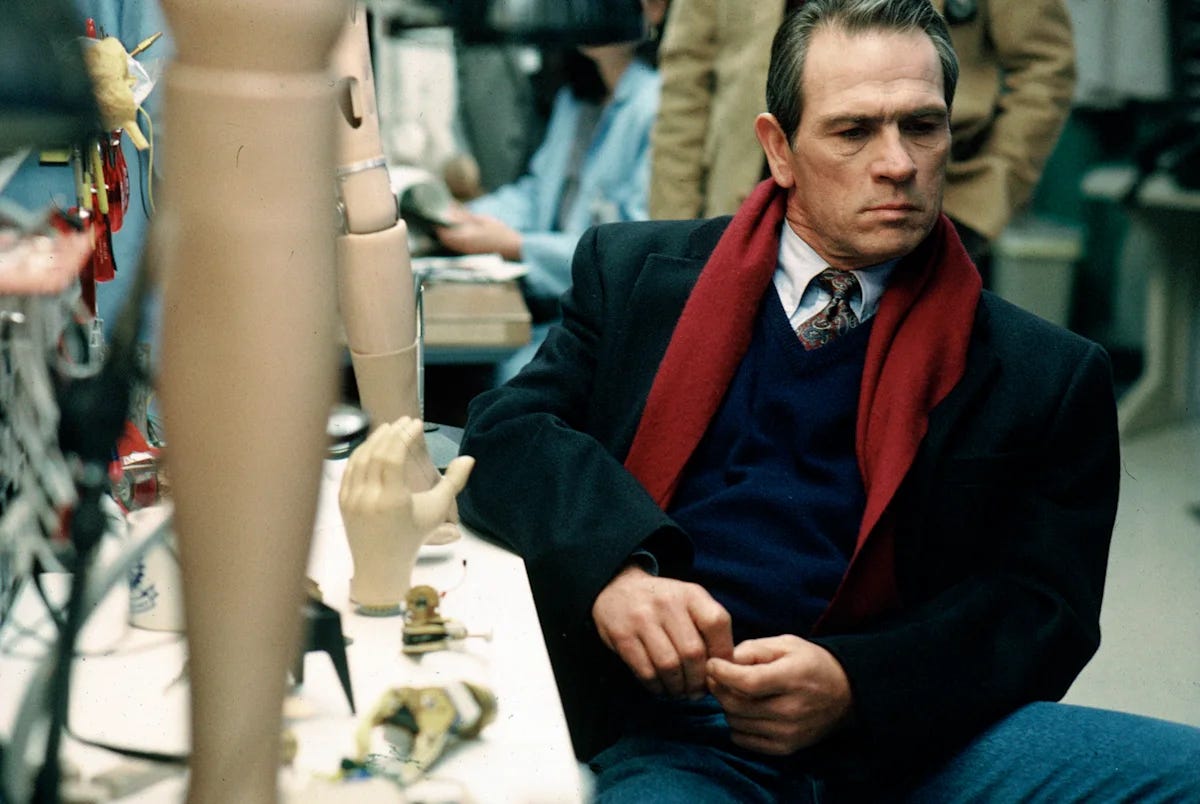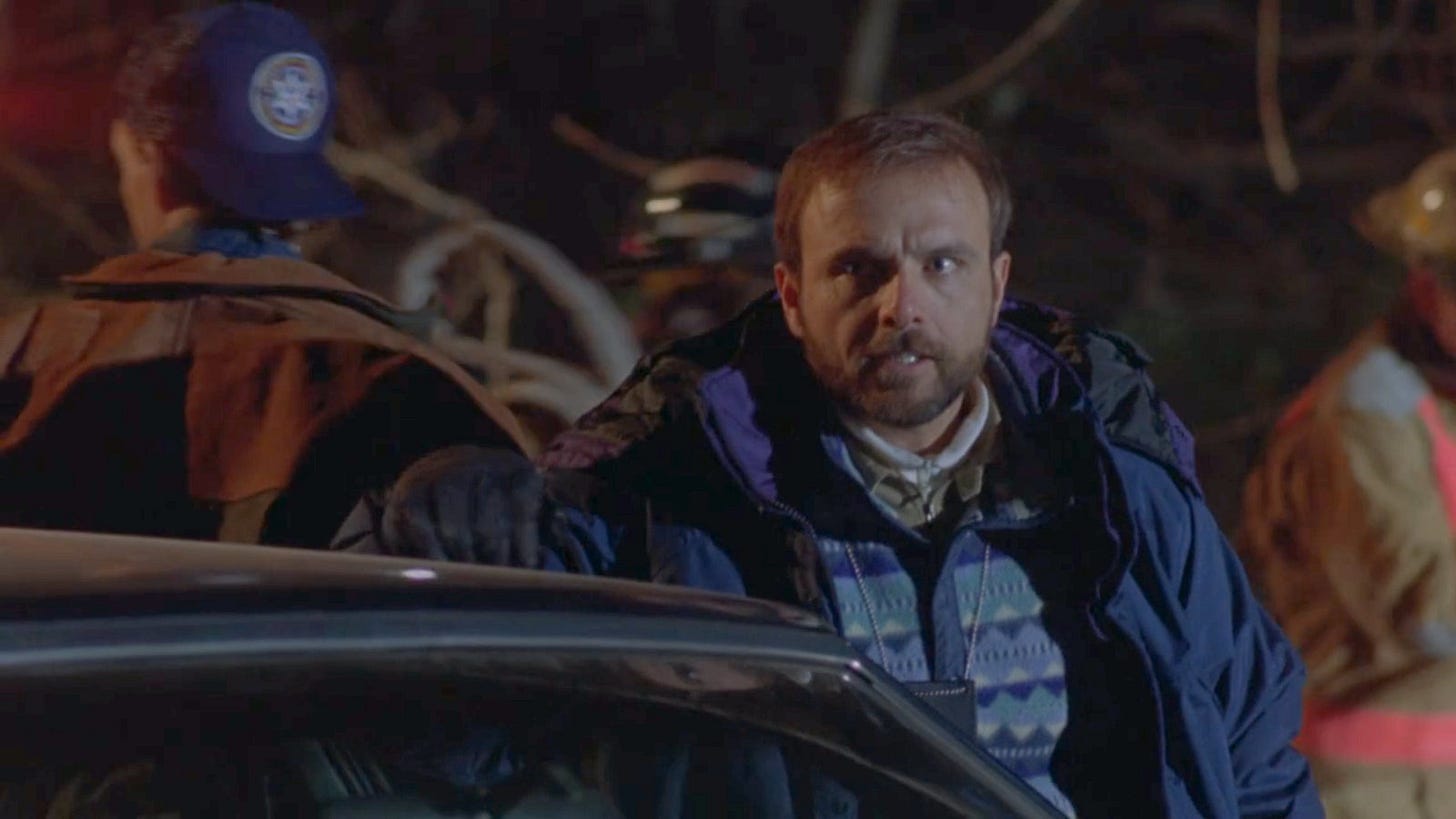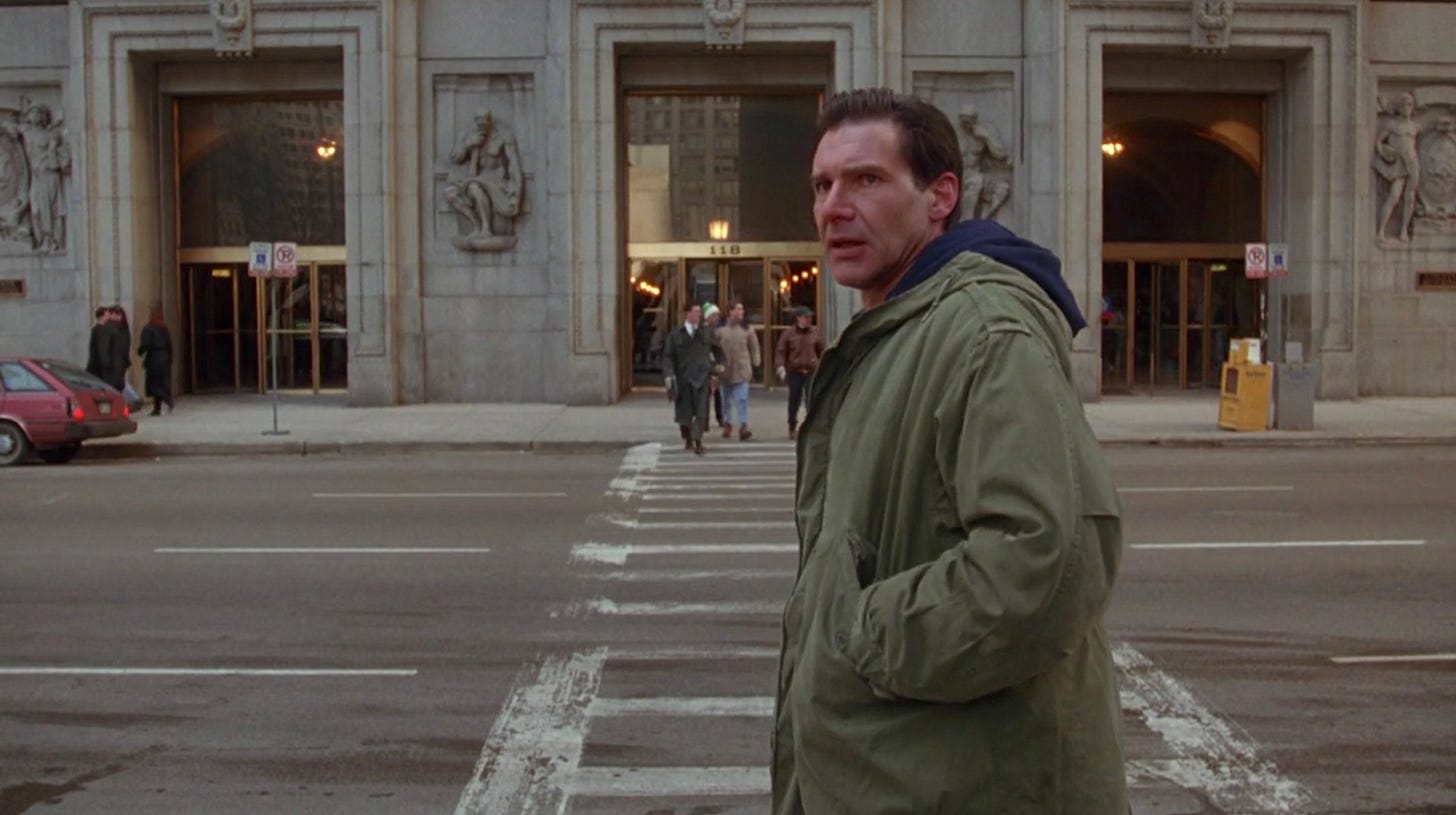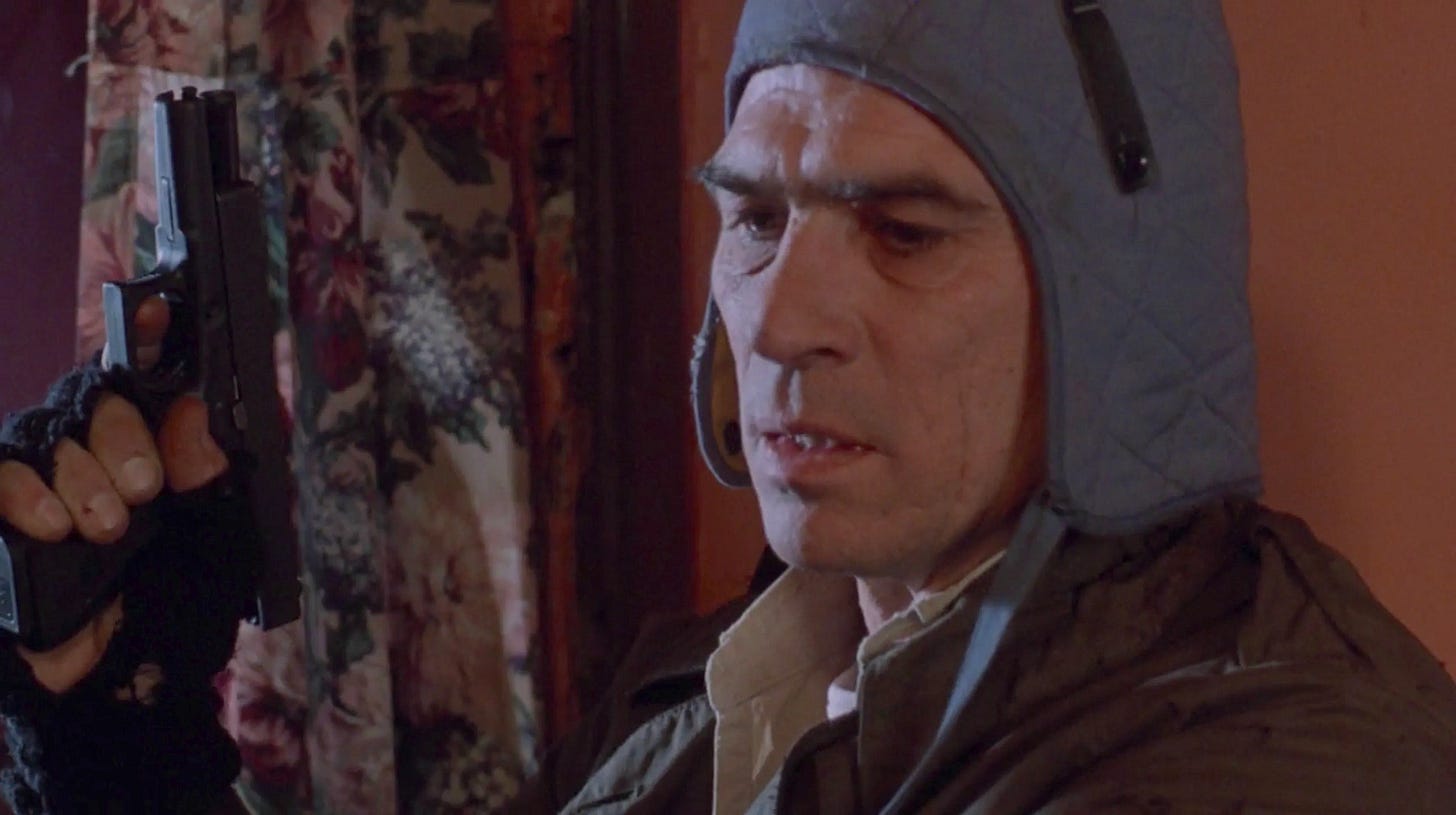🎬 #169 Film Fashion Grails.
Trying something a bit different this week. I'm going deep into one film and one aspect of one film and just exploring the idea of menswear in a film and styling more broadly. This is one of my favourite films from my youth. I watched it countless times, probably beginning at 10:30pm on ITV back in the 90s. It was a follow up to the director's last film, Under Siege.
And having recently re-watched it, it struck me how well dressed everyone is in it. Well dressed in the sense of now, especially. It feels quite timely in terms of style as it stands today and street wear fashion or casual fashion more generally.
Hope you enjoy this edition. I've really enjoyed working on it, and maybe I'll start doing more newsletters in this vein - just going a bit more in depth into a specific element of a film.
Happy viewing, happy grail-ing
Bry
FILM: THE FUGITIVE
1993 Dir Andrew Davis
2 hrs 10 mins
I'm not sure why it took me so long to realise that this might be the most stylishly dressed film, especially from the 90s. But re-watching it, it struck me that even from the very first moment that Harrison Ford's character, Dr Richard Kimble, is arrested and taken in for questioning, he's wearing a fantastic Patagonia jacket. It's mid-thigh length, green with a blue inlay, and it's set against a crisp white crewneck t-shirt. And even then, in that seemingly random decision, it establishes his character as someone who is keen for the outdoors, who is prepared and ready for anything - which will come in useful over the course of the film.
Even the styling of the yellow DOJ jumpsuit that his character wears after he's sentenced to the murder of his wife, is bold and dare I say - looks ‘cool'. The one really strong colour in the film is that crisp, radioactive yellow. Elsewhere we find the colour palette to be more muted, more earth tones, blues, and greys, with little highlights of colour here and there, like Tommy Lee Jones' U.S. Marshal character Gerard’s red scarf pictured in the frame at the top of the newsletter. But generally, this is a very practical, a very tactical and utilitarian look for most of the characters.
I've become so obsessed with the costumes in this film, specifically that Patagonia jacket from one of the early scenes, that I've spent more time than I'd like to admit trying to find a version of it online, and I'm yet to come across it. It's even quite hard to find a reference to it from the film where people are talking about it.
The standout layering in the film is probably Joe Pantoliano’s character Cosmo, who's part of the US Marshals team. Especially in the frame above where he's layered a winter overcoat with what I assume to be a Patagonia fleece over the top of like a zip-up jacket and then another zip polo neck under that, and it's just perfect. It makes me think of Adrien Brody's character in Succession - that amazing moment of layering in the episode where they're visiting his character - it’s a style that’s very much in at the moment, especially in Autumn / Winter. It feels like it could have come off the streets of East London today.
The men's styling in particular tells an important story throughout the film. Dr. Richard Kimble starts in a tuxedo and via the Patagonia jacket ends up in a DOJ jumpsuit, which then transitions to an old grey-blue pair of overalls. From there, he's using his costumes to blend in, like the military green parka in the frame above. That is, until he gets closer to his former self, which ends up being a grey-brown tweed blazer with a shirt and tie. Although it's a more casual version of the opening tuxedo, it indicates that he's getting back to his old self. He's getting back into the ‘wardrobe’ of a doctor - he's now closer to being free from being the fugitive and the criminal that he's been accused of being. The blue shirt is the total opposite of the yellow jumpsuit.
Even when Tommy Lee Jones's character adopts a wardrobe to go undercover, even then the styling is on point as they say. Dressed as a vagrant character - the styling is edgy and yet it still feels really cohesive and fashion-y.
What makes the choice of wardrobe even more impressive for Dr. Kimble's character is that he's meant to have improvised these looks from items that he's taken from people in hospitals, and clothes that he's combined together from random sources on the move. It lends the choices that sense of something that's been thrown together but also comes across as very considered. I remember when I was younger, I would enact scenes from the film with my action figures and try to pick out clothes closest to the clothing seen on screen - I wanted to get close to that improvised on the move styling - the kind of styling that says I don’t care about it, but I’ve managed to look great on the run anyway.
Even characters that are on screen for one scene are really considered in terms of their styling. Take the character in the frame above, the casual grey, open cardigan over the cool - worn jazz t-shirt. Every outfit in the film feels of the world of the film, it feels worn, it feels of that time, of that year. It feels casual, considered - stylish without trying too hard. It's no surprise that the wardrobe was so good - because the costume designer, Aggie Guerard Rodgers, was one of the key costume designers on the Star Wars franchise. She was also the costume designer on Ryan Coogler’s first film - Fruitvale Station.
I could talk about the styling in this film forever, but I'll wrap it up with a little insight into my youth. Whenever I saw the video cover for this film or the thumbnail art, I used to always wonder for a second why Harrison Ford's character was wearing a nun's outfit, and I still think that to this day.
*Available for a small rental fee on Apple and Amazon in the US and UK. Also available to stream on Netflix in the UK.
Fact: The scene during the St Patrick’s Day parade was improvised - not scripted. The actors went out into the crowd and were followed by steady cams. If you watch it with this in mind you can sense the reality in the eyes of the crowd.









